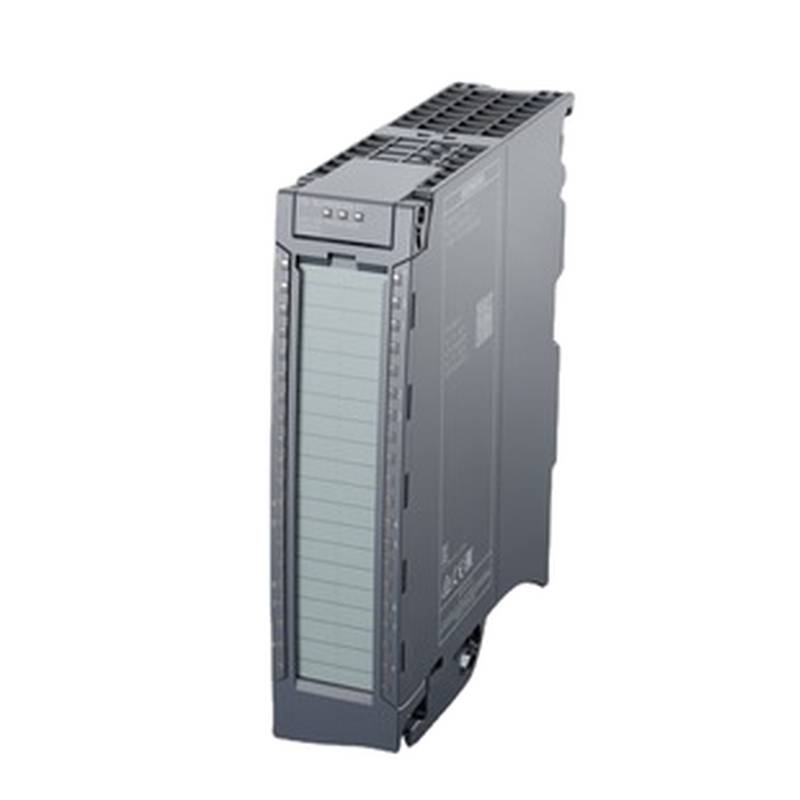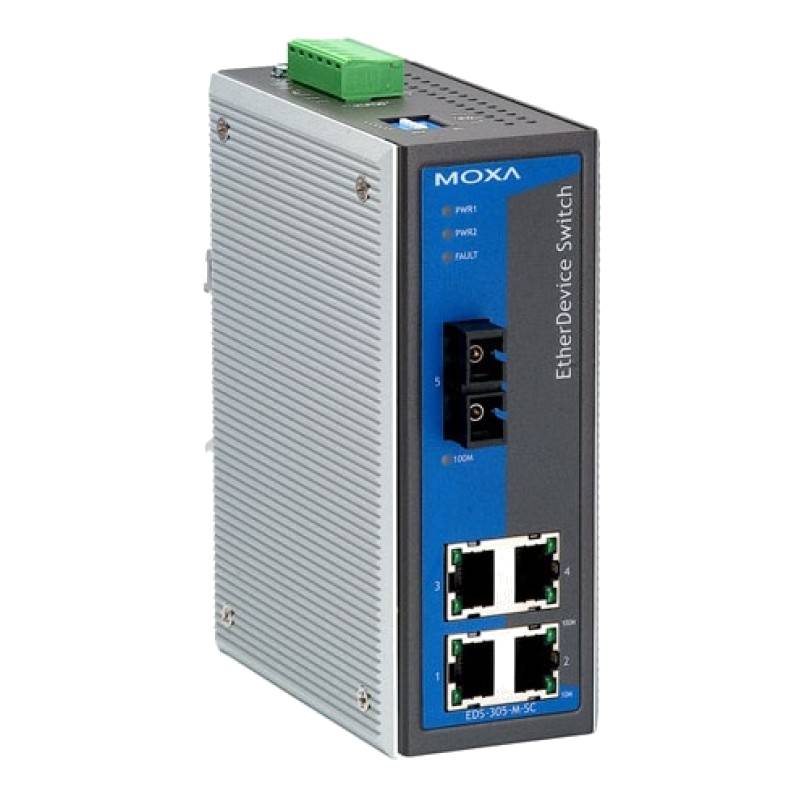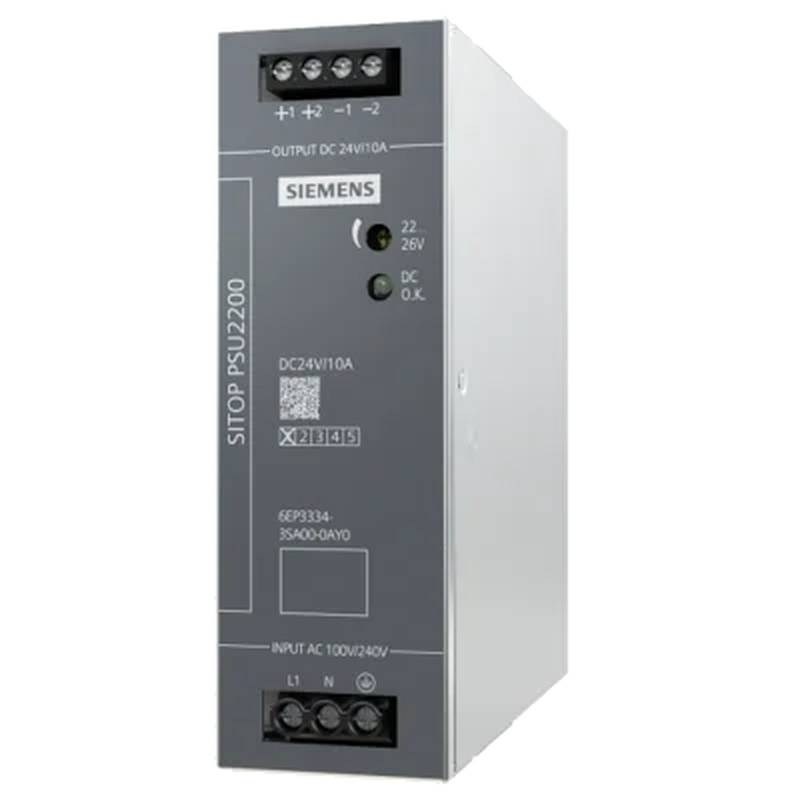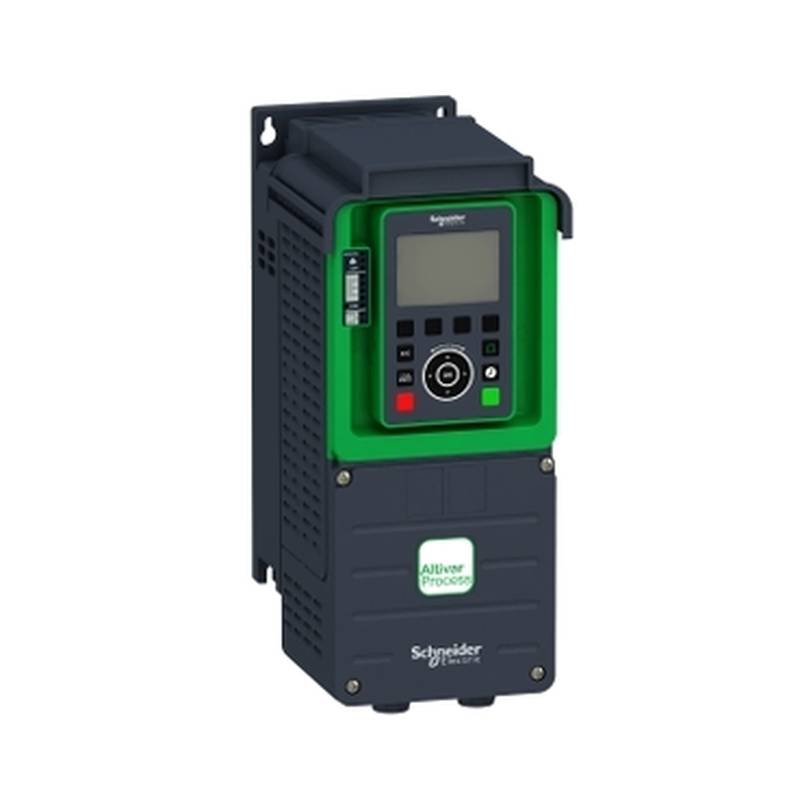
The Moxa ioLogik E1240 is a robust 8-channel digital input remote I/O module designed for demanding industrial automation applications. It excels in providing reliable data acquisition in harsh environments, featuring high-speed I/O response times, extensive channel isolation, and a compact, DIN-rail mountable form factor. This module supports a wide operating temperature range and offers advanced features such as event triggers and data logging, making it an ideal solution for monitoring and control across various industries.
| Specification | Detail |
| :--------------------- | :------------------------------------------------- |
| Digital Inputs | 8, optically isolated |
| Input Type | Dry contact, Wet contact |
| Input Voltage Range | 0-30 VDC |
| Isolation Voltage | 2.5 kVrms |
| Response Time | 1 ms (typical) |
| Communication Interface | RS-485 (2-wire) |
| Protocol | Modbus RTU |
| Power Input | 12-48 VDC |
| Operating Temperature | -40 to 85 °C |
| Mounting | DIN-rail |
| Dimensions | 31.5 x 70 x 102 mm |
Core Features & Market Positioning
The Moxa ioLogik E1240 distinguishes itself through its high-speed digital input capabilities, essential for applications requiring near real-time monitoring of events. Its superior channel isolation (2.5 kVrms) ensures robust protection against electrical noise and surges, a critical advantage in industrial settings where such disturbances are common. This module is positioned as a cost-effective yet highly reliable remote I/O solution, offering a compelling alternative to more complex or less ruggedized devices. Its support for the widely adopted Modbus RTU protocol simplifies integration into existing SCADA and HMI systems, enhancing its market appeal for system integrators seeking interoperability.
Key Application Scenarios
The versatility of the Moxa ioLogik E1240 makes it suitable for a broad spectrum of industrial applications. It is frequently deployed in building automation for monitoring door/window status, tank levels, and equipment operational states. In the energy sector, it is invaluable for remote monitoring of power substations, status indication of circuit breakers, and alarm condition reporting. Manufacturing facilities leverage the E1240 for machine status monitoring, counting production cycles, and detecting the presence or absence of components on assembly lines. Its rugged design also lends itself to environmental monitoring, such as tracking rainfall, wind speed, and sensor alerts in remote outdoor installations.
Practical System Integration Guidance
Integrating the Moxa ioLogik E1240 into an industrial control system is straightforward due to its standard Modbus RTU interface. The module utilizes a 2-wire RS-485 serial communication port, requiring careful attention to termination resistors and correct polarity when daisy-chaining multiple devices on a bus. Power can be supplied via a 12-48 VDC input, with terminals clearly marked for polarity. Configuration typically involves setting the Modbus slave ID and communication parameters (baud rate, parity, data bits) via a configuration utility or directly through Modbus commands. Wiring the digital inputs involves connecting the sensor or switch to the appropriate input terminal and the common terminal for each channel, ensuring the correct voltage range is observed to prevent damage.
Operation and Risk Mitigation
The ioLogik E1240 operates by continuously scanning its 8 digital input channels and making the status available via the RS-485 Modbus interface. Event triggers can be configured to send data updates only when a change of state occurs, optimizing communication bandwidth. For risk mitigation, it is crucial to adhere to the specified input voltage limits (0-30 VDC) to avoid damaging the sensitive input circuitry. Proper grounding and shielding of the RS-485 communication lines are essential to maintain data integrity and prevent interference, especially in electromagnetically noisy environments. Ensuring the module operates within its specified temperature range (-40 to 85 °C) is vital for long-term reliability.
Scalability & Long-Term Value
The Moxa ioLogik E1240 offers excellent scalability for expanding monitoring capabilities. Its Modbus RTU interface allows for a large number of devices to be connected in a daisy-chain configuration on a single RS-485 bus, limited primarily by the bus length and the number of slave IDs available. This enables straightforward expansion of digital input points as system requirements grow. Furthermore, its compatibility with a wide array of PLCs, HMIs, and SCADA software platforms ensures that it can be integrated into both new and existing industrial control architectures, providing long-term value and avoiding vendor lock-in. Its rugged construction and industrial-grade components contribute to a long operational lifespan, minimizing the need for frequent replacements.
Frequently Asked Questions
What is the maximum number of Moxa ioLogik E1240 modules that can be connected on a single RS-485 network?
The maximum number of Moxa ioLogik E1240 modules on an RS-485 network is primarily determined by the bus length and the total number of unique Modbus slave IDs required. Each E1240 module requires a unique slave ID.
RS-485 networks can support up to 32 standard devices without repeaters, but with specialized transceivers, this can be extended to 128 or even more devices. The total length of the RS-485 bus also impacts the number of devices, with longer distances requiring fewer devices and careful attention to termination.
Consider the overall system architecture and potential for communication errors when planning the number of modules. Moxa's documentation often provides guidelines for network design and device density to ensure optimal performance and reliability.
How do I configure the Modbus RTU communication settings for the Moxa ioLogik E1240?
Modbus RTU communication parameters, including the slave ID, baud rate, parity, and data bits, are typically configured using Moxa's Windows-based utility software or through Modbus commands. Each E1240 module needs a unique slave ID to differentiate it on the network.
The baud rate should be set to match the master device (e.g., PLC or SCADA system), with common settings being 9600 or 19200 bps. Parity (None, Even, Odd) and data bits (7 or 8) must also be consistent across all devices on the Modbus RTU network.
Always consult the ioLogik E1240 user manual for the exact procedure and default settings. Incorrect configuration of these parameters is a common cause of communication failure.
What type of digital inputs does the Moxa ioLogik E1240 support, and what are the voltage requirements?
The Moxa ioLogik E1240 features 8 optically isolated digital inputs that support both dry contact and wet contact configurations. This flexibility allows it to interface with a wide variety of sensors and switches.
For dry contact inputs, the module detects a connection or disconnection between the input terminal and the common terminal. For wet contact inputs, it expects a voltage signal within a specified range. The input voltage range for these digital inputs is 0 to 30 VDC.
It is critical to ensure that the voltage applied to the input terminals does not exceed 30 VDC, as this could lead to module damage. Always verify the output voltage of your connected sensors or switches before wiring them to the E1240.
What is the purpose of optical isolation on the Moxa ioLogik E1240's digital inputs?
Optical isolation on the Moxa ioLogik E1240's digital inputs provides a crucial layer of protection by electrically separating the input circuitry from the internal logic of the module. This prevents voltage spikes or ground loops from damaging the module or affecting its operation.
This isolation is particularly important in industrial environments where electrical noise and varying ground potentials are common. It ensures data integrity by minimizing the impact of external electrical disturbances on the input signal.
The 2.5 kVrms isolation rating signifies a high level of protection, making the E1240 suitable for deployment in harsh or electrically challenging industrial settings where reliability is paramount.
Can the Moxa ioLogik E1240 be used for high-speed counting applications?
While the Moxa ioLogik E1240 offers a typical response time of 1 ms, making it suitable for fast event detection, it is not specifically designed as a dedicated high-speed counter module. Dedicated counter modules typically offer specialized hardware for handling very high pulse frequencies.
However, for many industrial applications where event changes need to be captured quickly, such as status changes of machinery or alarm triggers, the 1 ms response time is more than adequate. The module's ability to log events and trigger actions based on input state changes can be leveraged for basic counting tasks.
For applications requiring precise counting of events at frequencies exceeding several hundred Hertz, it would be advisable to consider Moxa's dedicated counter modules or other specialized hardware designed for such high-frequency pulse acquisition.
What is the typical response time of the digital inputs on the Moxa ioLogik E1240, and why is it important?
The Moxa ioLogik E1240 typically boasts a digital input response time of 1 millisecond (ms). This rapid response is critical for applications where timely detection of changes in digital states is paramount for control and monitoring accuracy.
A fast response time ensures that events, such as a machine starting or stopping, a door opening, or an alarm condition being triggered, are registered by the system almost instantaneously. This minimizes the risk of missing critical signals or experiencing delays in automation processes.
This speed is a key differentiator for the E1240, enabling it to be used in applications requiring near real-time data acquisition, distinguishing it from slower, more general-purpose I/O modules.
How does the Moxa ioLogik E1240 handle power outages or interruptions?
The Moxa ioLogik E1240 does not have internal battery backup for data retention during power outages. If power is lost, the module will cease to operate and will lose any volatile data it was processing at that moment.
However, upon power restoration, the module will automatically reboot and resume its configured operation, scanning the digital inputs and re-establishing communication with the master device. Its non-volatile memory stores the configuration settings, ensuring it returns to its programmed state.
For applications requiring continuous data logging through power interruptions, consider external data logging solutions or ensuring the master controller has its own robust data buffering capabilities to account for such events.
What are the advantages of using the Modbus RTU protocol with the Moxa ioLogik E1240?
The Modbus RTU protocol is a widely adopted, serial communication standard in industrial automation, offering simplicity and broad compatibility. Using Modbus RTU with the ioLogik E1240 ensures seamless integration with a vast array of existing PLCs, HMIs, and SCADA systems from various manufacturers.
Its relatively simple command structure and efficient data transmission make it a reliable choice for remote I/O communication over RS-485. This reduces the complexity of system design and implementation, lowering engineering costs and accelerating deployment times.
The widespread familiarity with Modbus RTU among automation engineers also simplifies troubleshooting and maintenance, contributing to the overall long-term value and supportability of systems employing the ioLogik E1240.
What is the operating temperature range of the Moxa ioLogik E1240, and what are its implications for deployment?
The Moxa ioLogik E1240 is engineered to operate reliably within a wide temperature range of -40 to 85 °C (-40 to 185 °F). This extensive operating window is a critical feature for industrial applications, which often expose equipment to extreme environmental conditions.
This broad temperature tolerance allows the E1240 to be deployed in diverse settings, including outdoor enclosures, unheated facilities, or near heat-generating machinery, without compromising performance or lifespan. Such robustness is essential for continuous operation in harsh environments.
Ensuring the module remains within its specified operating temperature is crucial for its longevity and consistent data acquisition. Proper ventilation or thermal management may be necessary in the most extreme environments.
How does the Moxa ioLogik E1240 contribute to IIoT and digital transformation initiatives?
The Moxa ioLogik E1240 serves as a foundational element for IIoT by providing reliable, remote digital input acquisition. It bridges the gap between physical industrial assets and digital networks, enabling data to be collected from discrete signals.
Its Modbus RTU interface can be easily integrated with gateways that translate Modbus data into modern IIoT protocols like MQTT or OPC UA, allowing seamless connection to cloud platforms and data analytics tools. This facilitates remote monitoring, predictive maintenance, and operational optimization.
By digitizing critical status information from machinery and processes, the E1240 empowers businesses to gain deeper insights, improve decision-making, and drive efficiency through digital transformation strategies.
























